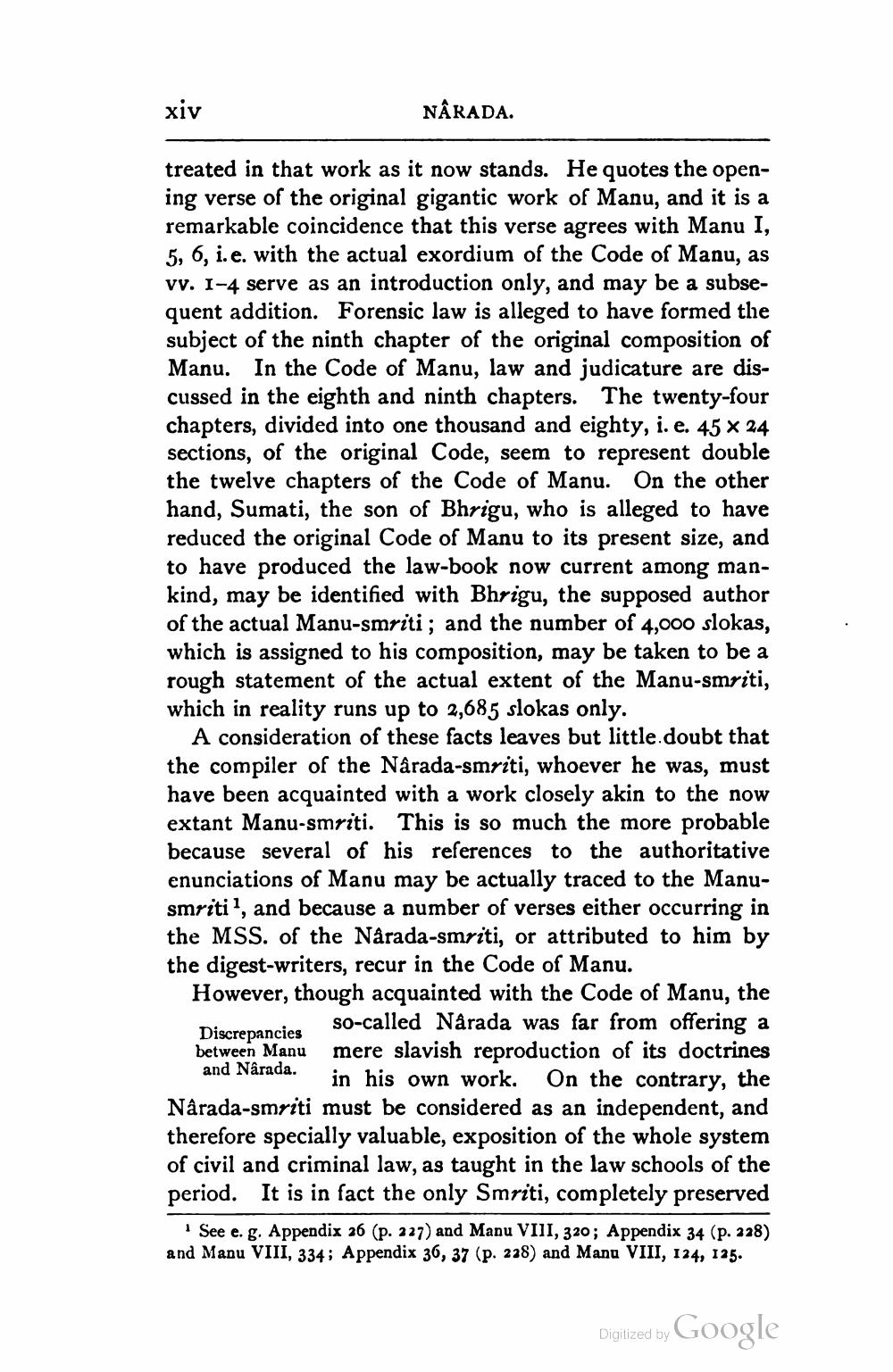________________
xiv
NÂRADA.
treated in that work as it now stands. He quotes the opening verse of the original gigantic work of Manu, and it is a remarkable coincidence that this verse agrees with Manu I, 5, 6, i.e. with the actual exordium of the Code of Manu, as vv. 1-4 serve as an introduction only, and may be a subsequent addition. Forensic law is alleged to have formed the subject of the ninth chapter of the original composition of Manu. In the Code of Manu, law and judicature are discussed in the eighth and ninth chapters. The twenty-four chapters, divided into one thousand and eighty, i. e. 45 x 24 sections, of the original Code, seem to represent double the twelve chapters of the Code of Manu. On the other hand, Sumati, the son of Bhrigu, who is alleged to have reduced the original Code of Manu to its present size, and to have produced the law-book now current among mankind, may be identified with Bhrigu, the supposed author of the actual Manu-smriti; and the number of 4,000 slokas, which is assigned to his composition, may be taken to be a rough statement of the actual extent of the Manu-smriti, which in reality runs up to 2,685 slokas only.
A consideration of these facts leaves but little doubt that the compiler of the Narada-smriti, whoever he was, must have been acquainted with a work closely akin to the now extant Manu-smriti. This is so much the more probable because several of his references to the authoritative enunciations of Manu may be actually traced to the Manusmriti?, and because a number of verses either occurring in the MSS. of the Narada-smriti, or attributed to him by the digest-writers, recur in the Code of Manu. However, though acquainted with the Code of Manu, the Discrepancies so-called Närada was far from offering a between Manu mere slavish reproduction of its doctrines and Narada.
14. in his own work. On the contrary, the Nârada-smriti must be considered as an independent, and therefore specially valuable, exposition of the whole system of civil and criminal law, as taught in the law schools of the period. It is in fact the only Smriti, completely preserved
See e. g. Appendix 26 (p. 227) and Manu VIII, 320; Appendix 34 (p. 228) and Manu VIII, 334; Appendix 36, 37 (p. 228) and Manu VIII, 124, 125.
Digitized by Google




